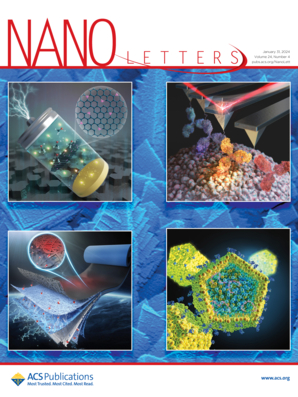无阳极锌金属电池中调节Zn2+离子通量和锌溶出的多功能分离器设计。
IF 9.6
1区 材料科学
Q1 CHEMISTRY, MULTIDISCIPLINARY
引用次数: 0
摘要
无阳极锌金属电池(alzmb)提高了能量密度,但需要超高的库仑效率才能保持稳定性,这受到副反应和枝晶生长的阻碍。均匀的锌汽提工艺是提高库仑效率的关键,但分离器设计对锌汽提的影响尚不明确。在此,我们提出了一种新的策略,通过水合钛酸(HTO)修饰玻璃纤维(GF)分离器,形成HTO@GF分离器,以实现高锌电镀和剥离的可逆性。实验和理论计算表明,高电负性氧促进Zn金属的电子损失并将其转化为Zn2+,从而调节Zn的剥离过程。HTO具有较强的水吸附能力,有利于Zn2+的脱溶,同时其层状结构为Zn2+提供了丰富的扩散途径。因此,当使用HTO@GF分离器时,Zn||Cu电池在1500次循环中保持99.78%的CE,而无阳极的Cu||NaV3O8·1.5H2O全电池在800次循环中运行。本文章由计算机程序翻译,如有差异,请以英文原文为准。
Multifunctional Separator Design for Regulating Zn2+ Ion Flux and Zn Stripping in Anode-Less Zn Metal Batteries.
Anode-less Zn metal batteries (ALZMBs) enhance energy density but require ultrahigh Coulombic efficiency for stability, which is hindered by side reactions and dendrite growth. A uniform Zn stripping process is essential for improving Coulombic efficiency, but the impact of separator design on Zn stripping remains unexplored. Herein, we propose a novel strategy to achieve the high reversibility of Zn plating and stripping by modifying the glass fiber (GF) separator with hydrated titanic acid (HTO), forming an HTO@GF separator. Experimental and theoretical calculations indicate that highly electronegative oxygen in HTO promotes electron loss from Zn metal and converts it into Zn2+, thereby modulating the Zn stripping process. The HTO exhibits strong water adsorption capability, facilitating Zn2+ desolvation, while its layered architecture provides abundant diffusion pathways for Zn2+. Consequently, Zn||Cu cells maintain 99.78% CE over 1500 cycles, and anode-less Cu||NaV3O8·1.5H2O full cells operate for 800 cycles when using the HTO@GF separator.
求助全文
通过发布文献求助,成功后即可免费获取论文全文。
去求助
来源期刊

Nano Letters
工程技术-材料科学:综合
CiteScore
16.80
自引率
2.80%
发文量
1182
审稿时长
1.4 months
期刊介绍:
Nano Letters serves as a dynamic platform for promptly disseminating original results in fundamental, applied, and emerging research across all facets of nanoscience and nanotechnology. A pivotal criterion for inclusion within Nano Letters is the convergence of at least two different areas or disciplines, ensuring a rich interdisciplinary scope. The journal is dedicated to fostering exploration in diverse areas, including:
- Experimental and theoretical findings on physical, chemical, and biological phenomena at the nanoscale
- Synthesis, characterization, and processing of organic, inorganic, polymer, and hybrid nanomaterials through physical, chemical, and biological methodologies
- Modeling and simulation of synthetic, assembly, and interaction processes
- Realization of integrated nanostructures and nano-engineered devices exhibiting advanced performance
- Applications of nanoscale materials in living and environmental systems
Nano Letters is committed to advancing and showcasing groundbreaking research that intersects various domains, fostering innovation and collaboration in the ever-evolving field of nanoscience and nanotechnology.
 求助内容:
求助内容: 应助结果提醒方式:
应助结果提醒方式:


